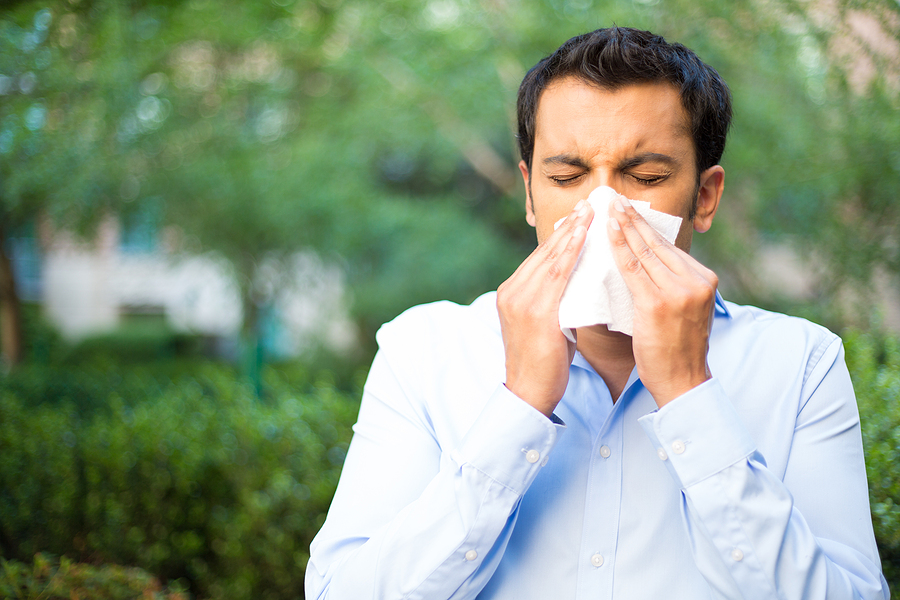At-Home Allergy Treatment: Contactless Immunotherapy Solutions
Posted By:SSG Admin Posted On:22-Jul-2024
Your immune system is designed to identify intrusions and fight them before they can do harm. With allergies, your immune system notices something new – food, insect venom, pollen, dust mites, mold/mildew spores, etc. – and gets to action. That response triggers inflammation that causes a host of symptoms ranging from sneezing and coughing to rashes and hives.
According to the Asthma and Allergy Foundation of America, over 100 million Americans experience some level of allergies each year. That breaks down to about 33% of U.S. adults and 25% of children. About 90,000 people go to the hospital each year after experiencing a severe allergic reaction after eating a specific food. Tree nuts, peanuts, shellfish, and fish are the most likely to trigger a severe reaction.
For years, avoidance of triggers and allergy shots have been the best ways to prevent severe reactions and the frustration allergies cause. Continual advancements in allergy research have found newer effective options. Contactless immunotherapy solutions are something you can do at home after an initial visit, and they’re proving to be an effective way of easing the symptoms you experience.
Explore the Different Types of Allergies
You may not realize how many allergies there are. We’ll cover each one and go over the common symptoms and triggers.
Drug Allergies
It’s estimated that as high as 10% of adverse drug reactions are caused by an allergic reaction. Allergies to drugs can lead to hospitalization, and one of the most common is a penicillin allergy.
However, additional studies find that less than 10% of those who claim to have a penicillin allergy are actually an allergy to that medication and not something else. This is why it’s important to go to an allergy doctor and get tests to pinpoint exact allergies.
Food Allergies
About 20 million Americans have food allergies. Common food allergies are eggs, fish, milk (lactose or milk proteins), peanuts, shellfish, soy, tree nuts, and wheat. Allergies to sesame seeds and oil are increasing and became a major food allergen in 2021.
Symptoms vary from abdominal discomfort and bloating to severe reactions like anaphylaxis. Avoiding some foods can be challenging as items are processed in plants where multiple items are manufactured, increasing the risk of cross-contamination.
Indoor/Outdoor Allergies
This type of allergy can be seasonal, but some allergens are present year-round and cause discomfort. It’s usually caused by a specific allergen like dust mites, mold spores, pet dander, rodent dander, and weed, tree, and grass pollen that are outside and can be carried inside.
Symptoms of indoor/outdoor allergies include itchy and watery eyes, a runny nose, sinus congestion, and sneezing. Running an air purifier continually can help lower the levels of allergens within the homes, but many people also rely on allergy shots or over-the-counter allergy medications to ease symptoms.
The allergens in this type of allergy can trigger asthma attacks in some people. This can be dangerous, so people with allergic asthma need to carry an inhaler and see a doctor often to ensure the medications are working well.
Insect Allergies
Insect allergies impact about 5% of Americans. Insect stings, such as bee stings, are one of the most serious as around 72 deaths per year occur from anaphylaxis following a sting. People can also be allergic to dust mites, cockroaches, and mosquito bites.
Latex Allergies
Just over 4% of the population are allergic to latex. It’s often more prevalent in fields where workers are constantly exposed to latex gloves, such as medical professionals and food workers. Skin reactions like rashes are common symptoms, but the reactions can become far more severe.
Seasonal Allergies
Seasonal allergies are specific to a certain time of year as pollen is released by plants and trees. Tree pollen is most prevalent in the spring as the leaves and flowers come out. Grass pollen is most common in the summer and can be worse on days that people mow a yard. Weed pollens like ragweed tend to be worse in the late summer and fall.
The symptoms of seasonal allergies are what most people know as hay fever. A runny nose, watery eyes, sinus congestion, and sneezing are typical. This type of allergy affects more than 80 million people.
Skin Allergies
A skin allergy can present as eczema, hives, a rash, and skin inflammation. Exposure to poison ivy causes a skin allergy, and that’s one that most people know of. Some people also have skin allergies to certain items like ingredients in skin care products and sunscreens, perfumes and fragrances, dyes, preservatives, and metals.
For example, I get a blistering rash when medical tape or bandages are on my skin for more than a few hours. This reaction occurs when using non-latex products, so it’s believed the skin allergy is due to the materials in the adhesive. That blistering rash is a clear sign of a skin allergy.
How Does Contactless Immunotherapy Work?
For years, people had allergy shots available to them, but these shots require regular visits for another injection. Subcutaneous (SCIT) injections are typically given once a week for up to five years. Each shot introduces a small amount of the allergen under the skin. To complete the treatment, you need to be available weekly for years, and that can be problematic for people with a busy schedule.
A newer option is intratympanic immunotherapy. It’s also a shot given directly in the lymph node, which means an ultrasound is also needed during the treatment to ensure proper positioning of the needle. This option can be better as it takes three injections given a month apart.
Sublingual immunotherapy (SLIT) treatments are our focus as it’s the least invasive and a treatment you can do at home. You place a drop or tablet under your tongue every day for up to five years. Those drops or tablets include small amounts of the allergen.
For your first dose, you’ll do them in the allergy doctor’s office to monitor you for a reaction. If all goes well, you’ll go home with a prescription product that you use daily on your schedule. There’s no need to arrange appointments around your work, school, or personal schedule, which makes them incredibly convenient.
Immunotherapy treatments are ideal if you have any of the following allergies:
- Allergic asthma
- Hay fever (seasonal allergies)
- Indoor/outdoor allergies to dust mites, mold, and animal dander
- Insect stings
After testing to determine exactly what your allergies are to, you can start slowly introducing your immune system to small doses of the allergen. It helps lower the inflammatory reaction. This treatment option has been studied for more than 20 years and is safe and effective.
The most common side effects are itching in the mouth and mild stomach discomfort which are lessened by adjusting the dosage. Very rare severe reactions have happened, which is why your first doses are given in the doctor’s office.
Premium Allergy & Respiratory Center offers allergy shots and contactless immunotherapy. We know that people prefer the pain-free option SLIT treatments offer due to its convenience and needle-free approach.





